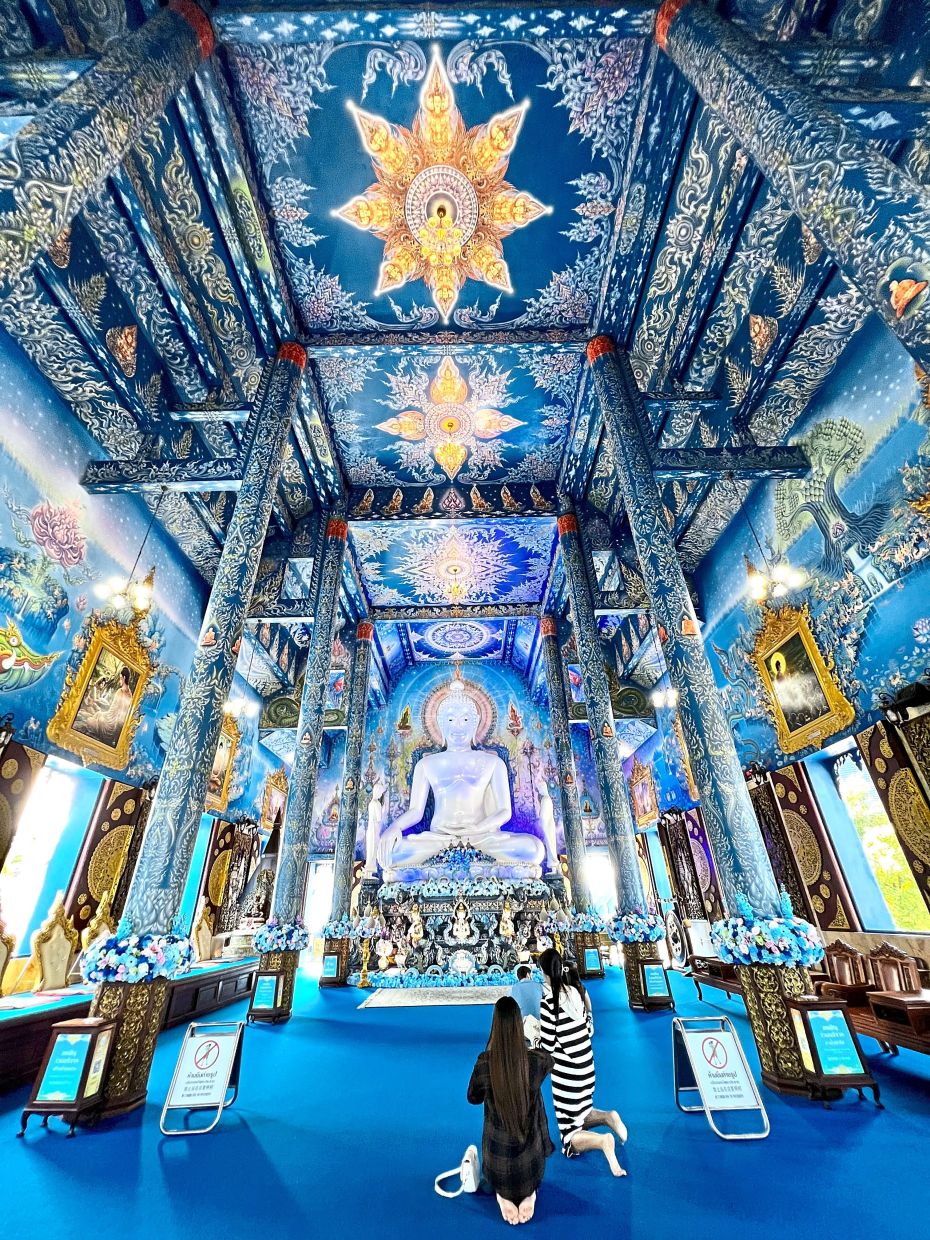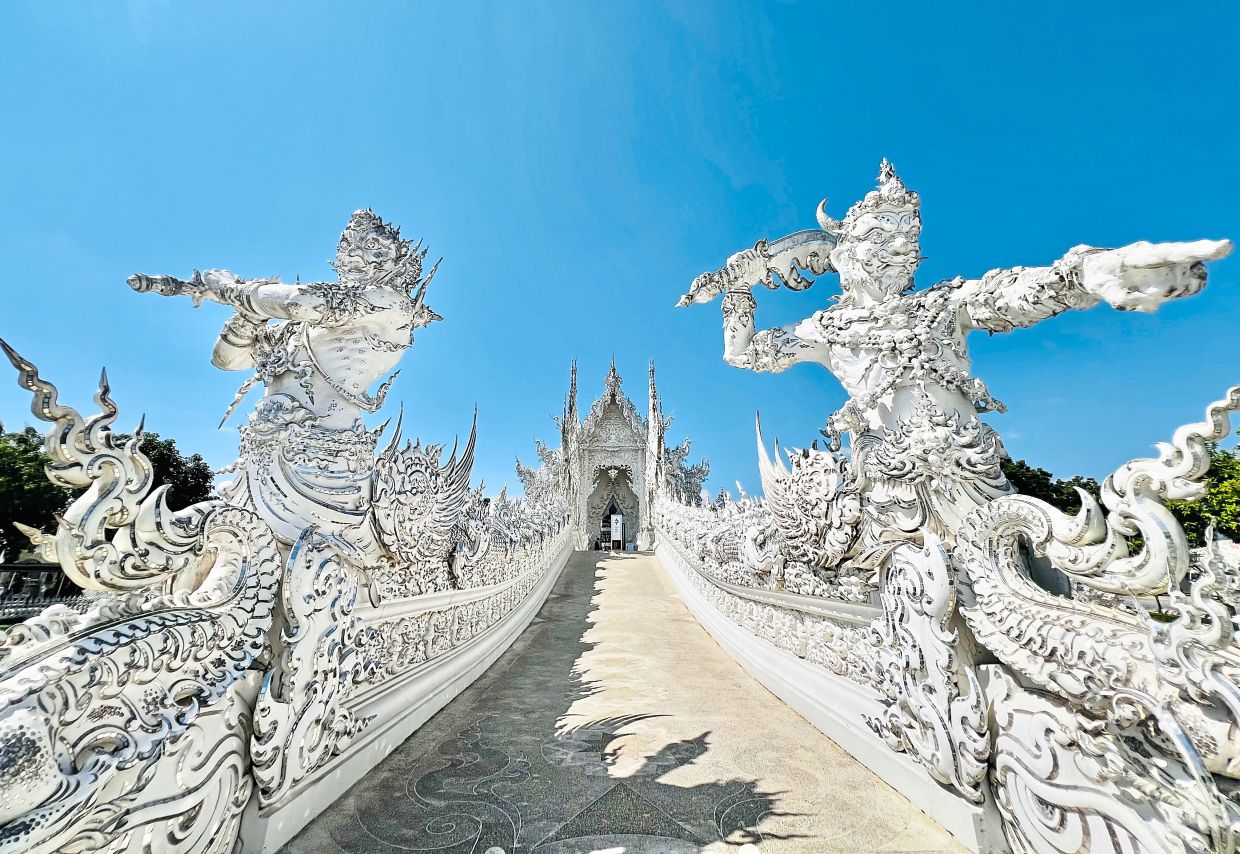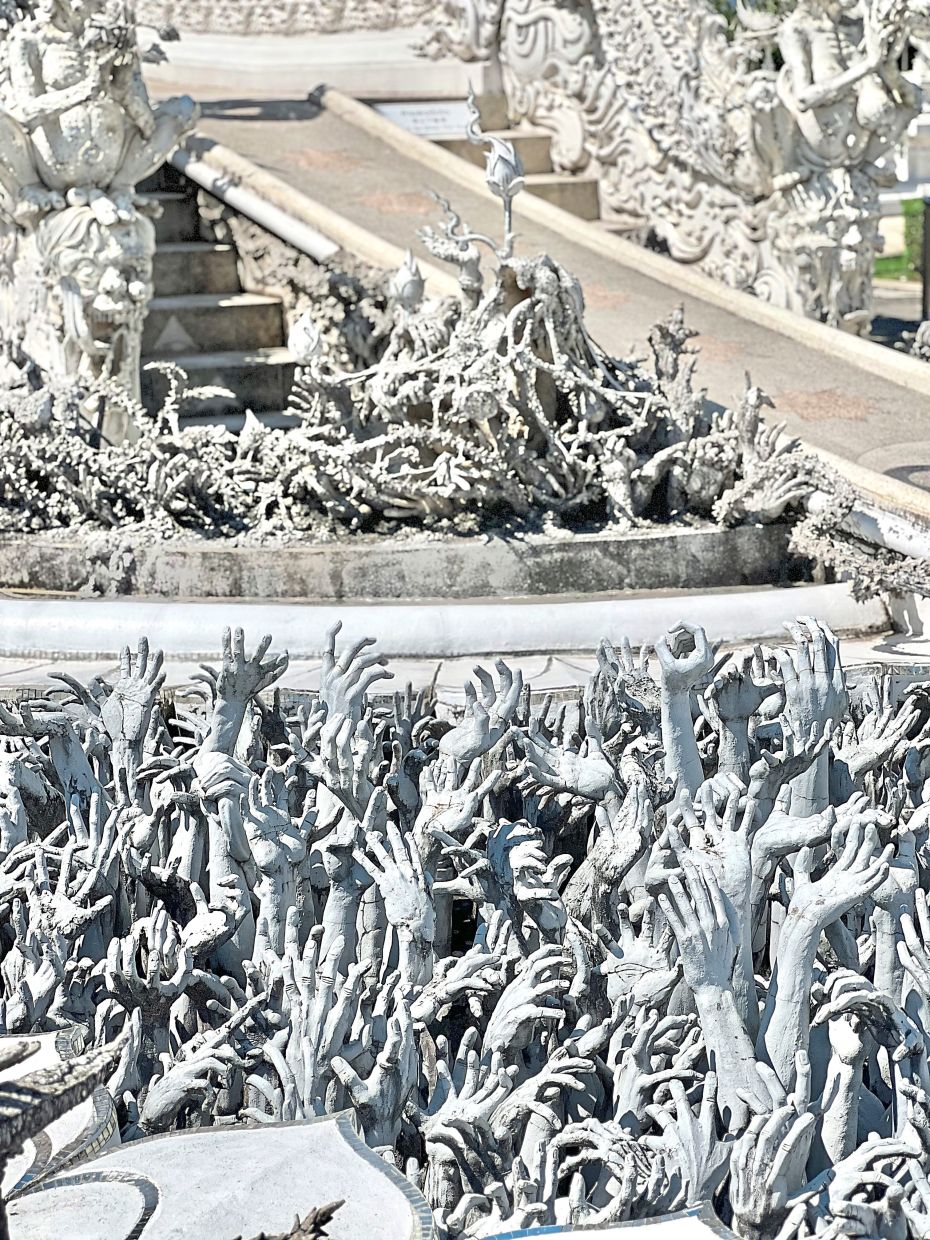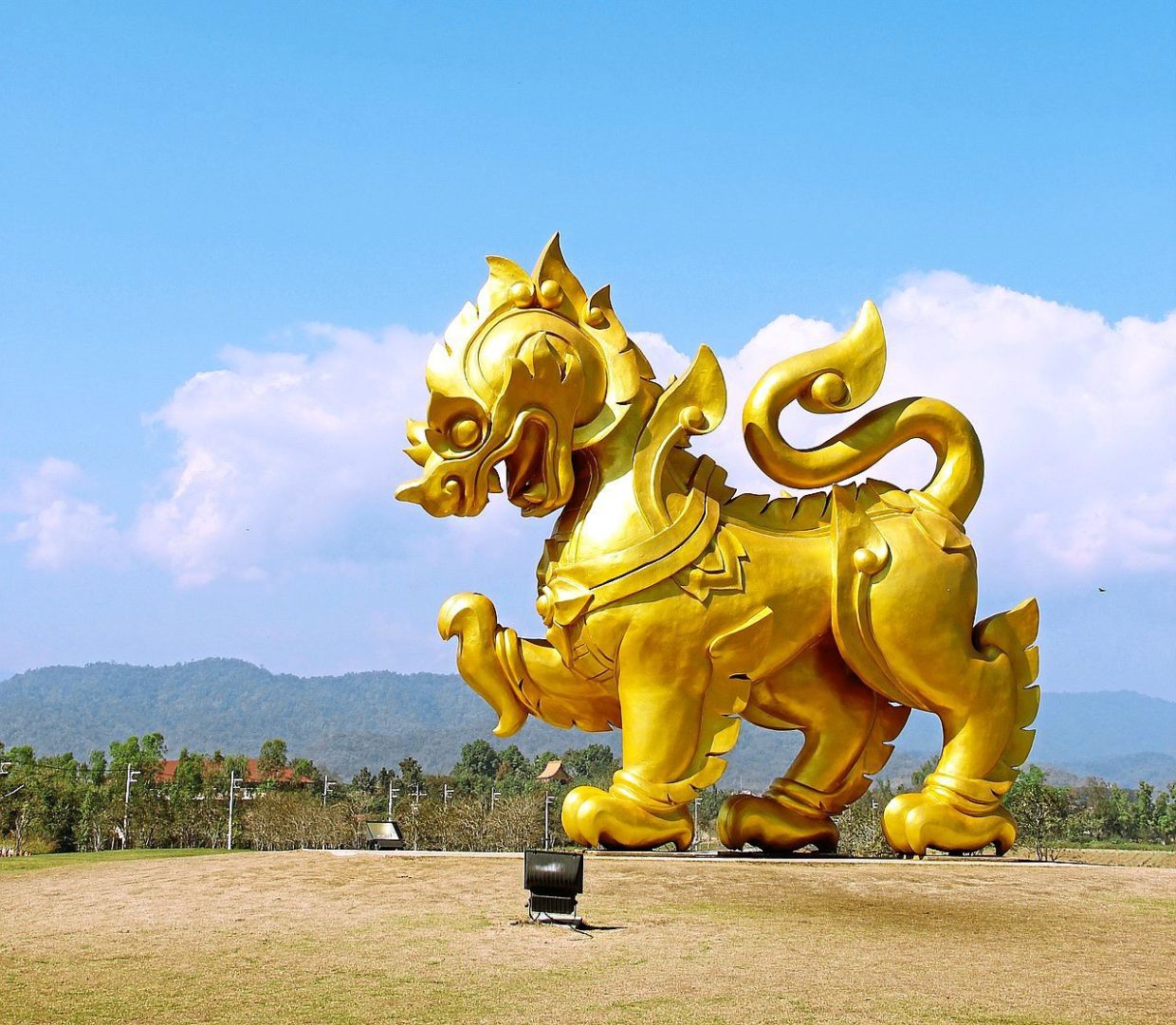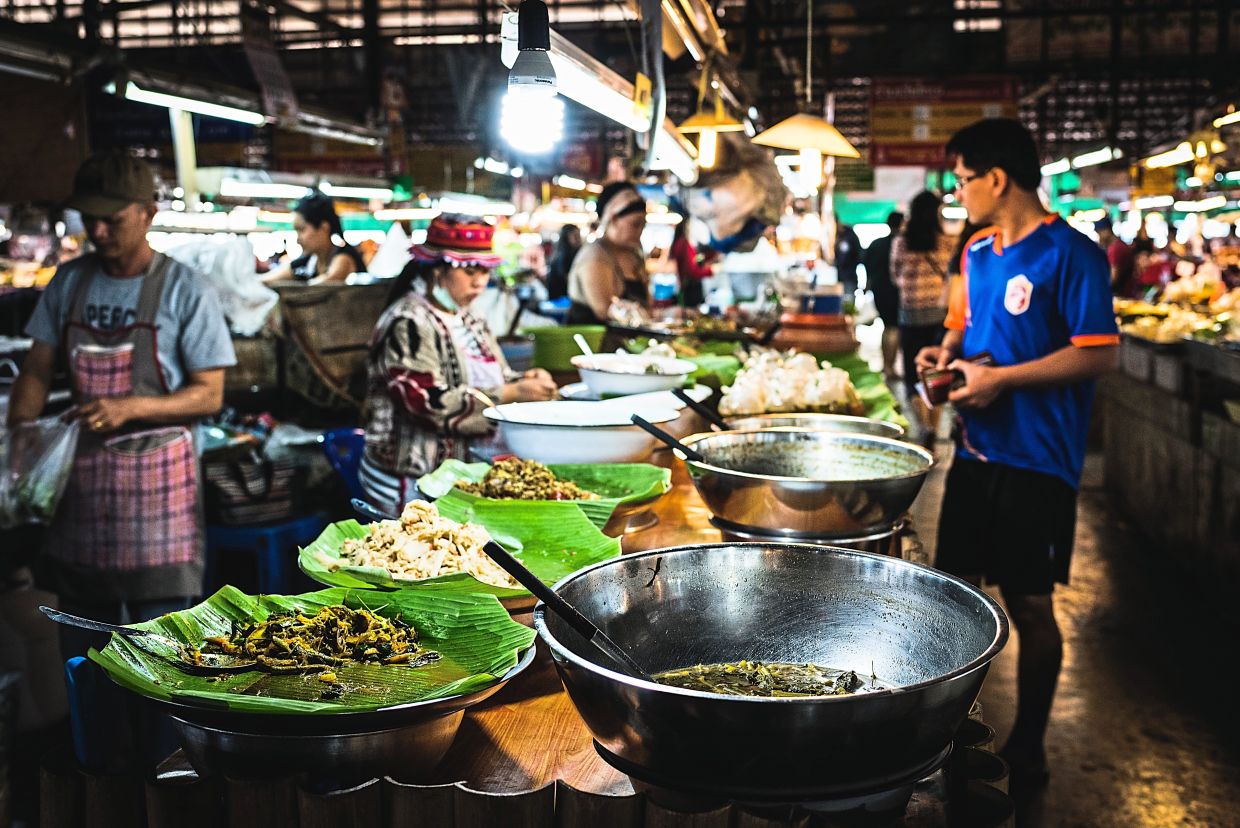This gleaming temple is the work of renowned Thai visual artist Chalermchai Kositpipat. — Photos: GISELE SOO/The Star
It was such a hot day in Chiang Rai, Thailand that I thought my skin was crisping up in the heat of the sun. But upon seeing the wondrous Wat Rong Khun – White Temple – I forgot about the heat ... at least momentarily.
Through the sea of people, the gleaming white temple loomed into view, charming us with its stately architecture. The morning sun cast a warm light on the glistening facade of the complex.
Eager to find out what lies beyond this temple, my friend and I embarked on a day trip to the city of Chiang Rai recently, checking out some timeless local traditions and, of course, indulging in the many delicious snacks and dishes.
Located in the mountainous region of Thailand, Chiang Rai is vastly different from the capital, Bangkok. It’s a little quiet and rustic, but still, the place is nothing short of amazing.
A three-hour ride
To get to Chiang Rai, we rode the morning bus from the neighbouring city Chiang Mai. It was packed with tourists, mainly backpackers and solo travellers. You should buy your tickets – online or at the station – in advance as the seats sell out pretty fast.
Upon boarding the bus, we informed our driver to drop us off at the bus stop outside Wat Rong Khun, because we found out that the temple was some distance away from the town centre. If you decide to stop at the bus terminal in town, it would take about 20 minutes to get to the temple by car.
We were impressed by our driver’s excellent driving skill as he carefully manoeuvred along the winding roads up the hill. He would stop every now and then for passengers to have a quick break – either to use the toilet, to stretch or buy some snacks.
After a couple of hours travelling through the meandering path, we finally entered into Chiang Rai. When the bus stopped, I heard the driver’s light footsteps trotting up to the narrow aisle – my cue to disembark the bus!
Being a popular tourist attraction, Wat Rong Khun is usually flooded with visitors, especially in the morning. It was just after 10am when we got there, so we decided to have lunch first, while waiting for the crowd to taper down. Food was aplenty at the food court, with stalls selling a mix of local dishes.
Just like in many food courts in Bangkok and other cities, diners have to buy pre-paid tokens or cards to pay the vendors as they do not take cash. If you loaded more money than you’ve spent on your token, just go back to the counter to get your change.
By about 11.30am, the crowd had moved along, so we went to buy our tickets to the temple. The entrance fee was only 50 baht (RM6.50).
If you decide to visit, remember to dress appropriately – both men and women have to cover their shoulders and knees, which means no sleeveless tops and short skirts or pants.
The White Temple
The stunning Wat Rong Khun has a perfectly manicured garden and a pond surrounding its compound. Visitors have to cross the bridge, passing through hyperrealistic sculptures of hands leading to the main shrine – said to represent Heaven.
The intricately-sculpted hands stretching out from the ground give the impression that that’s where “Hell” is.
The temple showcases the cycle of life, death and rebirth (also known as samsara) in Buddhism. And in order to attain freedom from suffering – in this case, portrayed by the outstretched arms – one must not succumb to worldly temptations.
Almost every corner of the complex provides a photo opportunity, and the bridge definitely is a prominent spot, as many visitors were seen happily posing.
The temple’s exterior is also “shiny”, as the complex is covered in pieces of glass and mirrors.
Within the complex, you will find other structures that are equally intriguing.
An unusual “feature” we did not expect was a majestic golden building ... which turned out to be a restroom!
The temple was opened in 2008, and is the creation of Thai artist Chalermchai Kositpipat. Wat Rong Khun, according to the artist, is a symbol of wisdom and pays tribute to Buddha’s purity, which is reflected in the all-white exterior.
In 2014, the worship house was severely damaged by an earthquake. But within a few years, the building was restored to its original glory.
Majestic blue
After spending a good few hours at the White Temple, we checked out another one nearby – Wat Rong Suea Ten, or the Blue Temple.
While Wat Samphran Temple sits on the outskirts of Bangkok, and features a giant dragon wrapped around the 17-storey building, the Blue Temple has two enormous dragon statues guarding the entrance.
Located some 15km away from the White Temple, this gold-blue building boasts a unique design, with the mythical creatures lining the edge of the stairs leading up to the temple.
We both “wowed” at the sight of the exquisite complex unable to contain our excitement – we were quite taken by the fine craftsmanship.
Wat Rong Suea Ten was less crowded which made our experience more enjoyable. Some locals (and a few tourists) were seen praying inside. Upon entering the building, we were greeted by a towering white Buddha statue at the centre. The interior was also adorned with paintings.
Our adventurous day trip came to an end before we knew it. We took a bus back to Chiang Mai after dinner. Along the journey, I glimpsed at the cluster of stars sparkling in the dark sky, making the hairpin turns of the road more bearable.
Of course, there are several other attractions to check out in Chiang Rai, including temples like the ancient Wat Jed Yod that was built in the 15th century, Wat Phuttha Utthayan Doi Insi, Wat Tham Phra (a cave temple), and Wat Doi Ngam Muang, the burial site of King Mangrai.
Here are some of the attractions that tourists can also visit in Chiang Rai. Seeing everything in a single day is not possible, unless you intend to just spend a few minutes at each place to take photos, which I don’t recommend. Instead, spend the night in town so you’ll have a bit more time to truly immerse yourself in the place.
1. The Golden Triangle
This is where Thailand meets Laos and Myanmar, hence its namesake – the Golden Triangle. Phra That Doi Pu Khao is an ancient Buddhist temple at Chiang Saen district, and has a great view of the triangle due to its strategic and high location.
Besides being a “meeting” point for local folks, the Golden Triangle was once notoriously known as the place where opium trade was done.
Head to the Golden Triangle Park Hall Of Opium and the House Of Opium museums to learn about the history of the opium trade in Thailand.
You can also go to Laos and Myanmar from the Golden Triangle too, but be sure to check if you need to bring along any special documents before you cross the borders.
2. Singha Park
Occupying 1,279 ha of land, Singha Park, previously known as Boon Rawd Farm, has an alcoholic past. It used to be a barley plantation that also produced Thailand’s own beer, the Singha. There is a gigantic lion (“singha”) statue on the field, which represents the logo of the beer brand.
Today, this agricultural land is a much-loved landmark for family outdoor activities, with colourful flower fields, tea plantations and a petting zoo.
3. Huai Mae Sai
Feeling adventurous? Head to Huai Mae Sai waterfall for a quick dip. The pool is deep, so you need to be careful when you swim here. For those who can’t or don’t wish to swim, you can still enjoy the cool water by dipping your feet into the pool.
Another waterfall, Huai Kaeo, is near a village and great for swimming too. You can either take a taxi or rent a bike to get to the waterfalls, and hike up from the parking spot.
4. The golden clock tower
If you ever visit Chiang Rai, check out the golden clock tower. Located in the heart of the city, the tower is dubbed “Thailand’s most beautiful tower”.
According to the Tourism Authority of Thailand’s website, it’s best visited in the evening, as there will be dazzling light and sound performances, which take place hourly from 6pm until 9pm. Each “show” lasts 10 minutes.
The tower was built in 2005 by the same artist who designed Wat Rong Khun, to pay homage to Queen Mother of Thailand, Queen Sirikit.
5. Affordable eats
Similar to other parts of the country, the food in Chiang Rai is equally flavourful. Fah Thai Market at the subdistrict of Nang Lae, for instance, is a neighbourhood market selling plenty of foodstuff and a variety of local street food.
You can shop for souvenirs here as well.
Travel notes
How to get there: Although Chiang Rai does have an airport (Mae Fah Luang International Airport), there aren’t any direct flights from Kuala Lumpur; most flights will have a layover in Bangkok. The best way – the fastest and cheapest – is to fly into Chiang Mai and take a bus to Chiang Rai.
Alternatively, you could take a flight to Bangkok, and then a domestic flight from there to Chiang Rai. A bus from Bangkok is another option, but that journey takes nearly 12 hours.
Where to stay: Most tourists will choose to stay at the riverside for the views, or nearer to the night market or clock tower for convenience. There are many hotels, homestays and even hostels to choose from, with prices ranging between RM50 and RM500 a night. Le Meridien Chiang Rai Resort is so far the only international chain available, but there are a handful of luxury local and independent properties worth checking out too.










